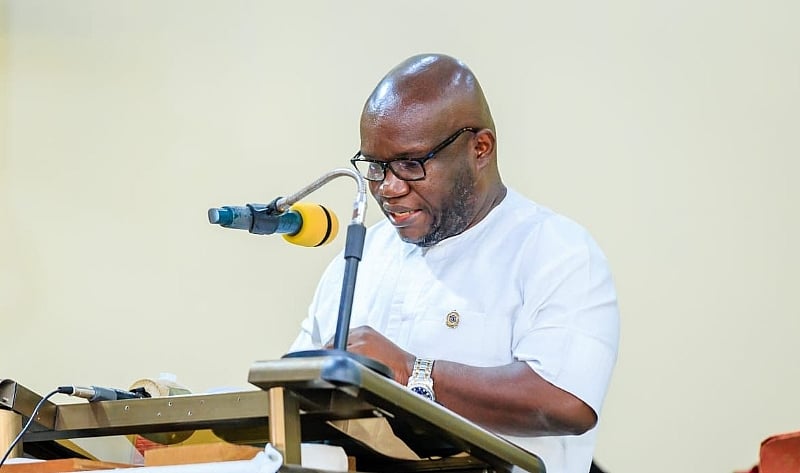Ghana’s telecommunications sector faced a significant challenge in 2024 due to the widespread damage of fibre optic cables, the backbone of modern digital communication. A staggering 5,600 fibre cuts were recorded, resulting in a substantial financial burden of US$9.2 million, equivalent to over GH¢138 million. This figure represents only the direct costs borne by telecommunication companies and doesn’t encompass the broader economic and societal consequences of these disruptions. Dr. Kenneth Ashigbey, CEO of the Ghana Chamber of Telecommunications, revealed these figures during the 24th Knowledge Forum held in Accra, highlighting the urgency and magnitude of the issue. The forum, themed “Leveraging Fibre for Accelerated Development,” served as a platform to discuss the challenges and unveil the Telecommunication Industry Optic Fibre Minimum Specifications and Standards Manual, a document intended to guide and standardize fibre optic infrastructure deployment across the country.
The financial impact of these fibre cuts extends beyond the direct repair costs. Each incident carries an average cost of US$23,000, but the cumulative effect includes lost revenue for telecommunication companies, reputational damage, and the substantial time invested in restoration efforts. In 2024, the collective downtime due to fibre cuts amounted to a staggering 432 days, significantly impacting service delivery and customer satisfaction. Moreover, the recurrent nature of the damage, with repeated cuts at the same locations, further exacerbates the problem, prolonging repair times and amplifying the negative impact on businesses and essential services that rely heavily on stable connectivity. These disruptions ripple across various sectors, affecting small businesses, banking services, emergency communications, education delivery, and other critical areas of the Ghanaian economy.
The primary culprit behind these disruptions is road construction, responsible for 20.68% of the total fibre cuts. This highlights the critical need for improved coordination and planning between road construction agencies and telecommunication companies. Other major contributing factors include theft and vandalism, accounting for 13.98% of the incidents, often driven by the misconception that copper is embedded within fibre optic cables. Private development activities also contribute significantly to the problem, underscoring the importance of responsible land management and development practices. Additional causes include broken ports, drain construction, fire incidents, agricultural activities, flooding, and accidental damage caused by utility companies such as Ghana Water and the Electricity Company of Ghana (ECG). This diverse range of causes necessitates a multifaceted approach to address the issue effectively.
Addressing this challenge requires a collaborative effort involving various stakeholders. Dr. Ashigbey acknowledged the existing support from regulatory bodies and policymakers, including the National Communications Authority (NCA), the Cyber Security Authority, and the Ministry of Communication, Digitalisation and Innovation. However, he stressed the need for intensified collaboration with infrastructure stakeholders, particularly road agencies, utility companies, and local assemblies, to ensure the protection of telecommunications infrastructure during development projects. Key recommendations include the mandatory relocation of telecom data cables in new road construction projects, strict enforcement of excavation permits, and the establishment of dedicated utility management units within road agencies. These measures would enhance coordination and minimize the risk of accidental damage during construction activities.
Furthermore, robust legal frameworks and enforcement mechanisms are crucial to deter deliberate acts of vandalism and theft. Dr. Ashigbey called for decisive action against individuals and entities responsible for damaging the fibre optic network, emphasizing the need for stricter penalties to discourage such behavior. He pointed out that the considerable funds spent on repairing fibre cuts could be redirected towards expanding connectivity to underserved areas, thereby bridging the digital divide and promoting inclusive development. This emphasizes the opportunity cost of these incidents, highlighting the potential for greater investment in expanding network coverage and improving service quality.
Dr. Ashigbey issued a strong appeal to all stakeholders to prioritize the protection of Ghana’s digital backbone, recognizing its critical role in driving economic growth and social development. He urged the Minister of Communication, Digitalisation and Innovation to champion legislation that consolidates existing laws and ensures robust protection for telecommunications infrastructure. This legislative push requires the support of other key government officials, including the Ministers for the Interior and the Attorney General, to ensure effective implementation and enforcement. A comprehensive legal framework is essential to safeguard this vital infrastructure and create a secure environment for continued investment and expansion of telecommunications services. The collective responsibility of protecting this national asset is paramount to securing Ghana’s digital future and realizing the full potential of its digital economy.


